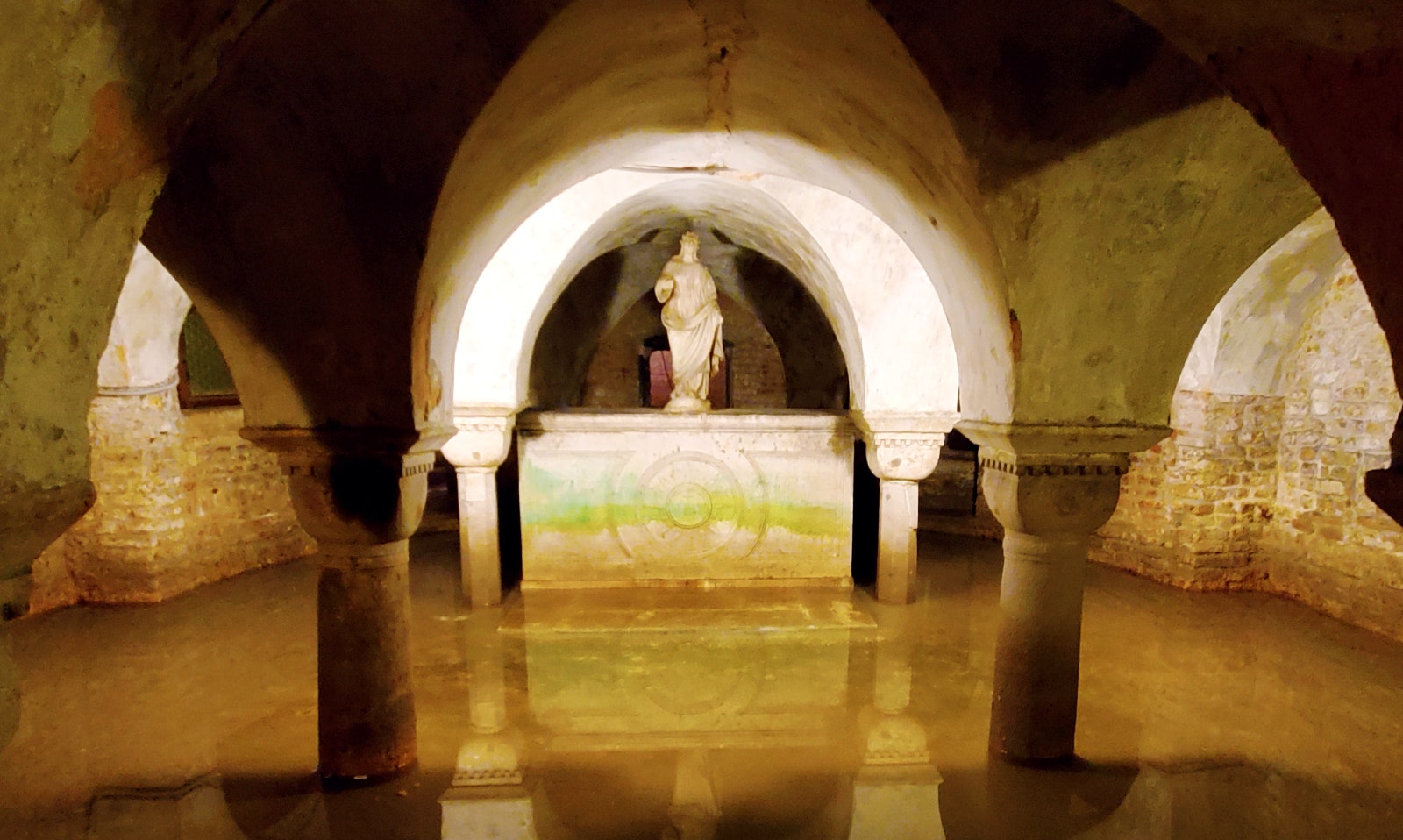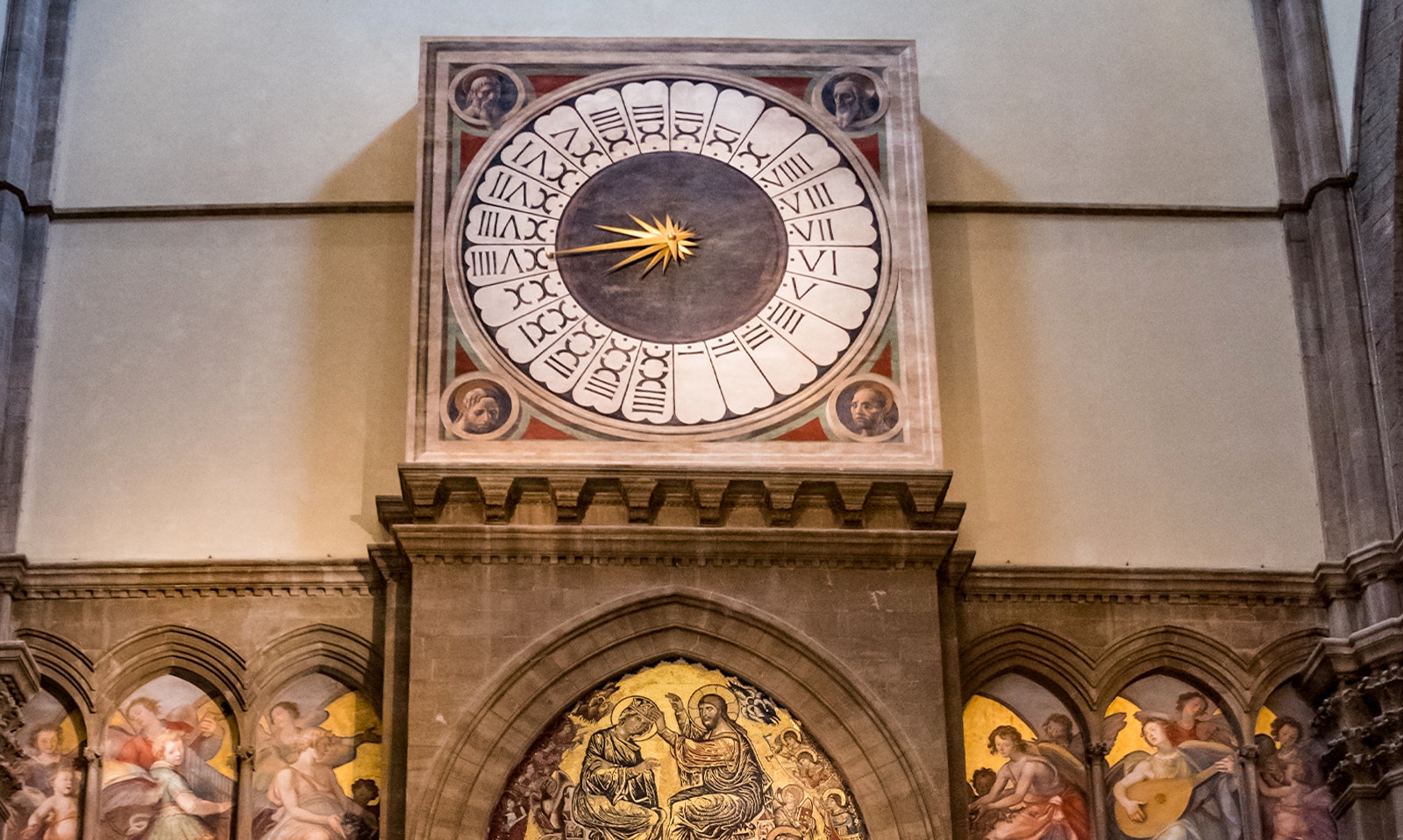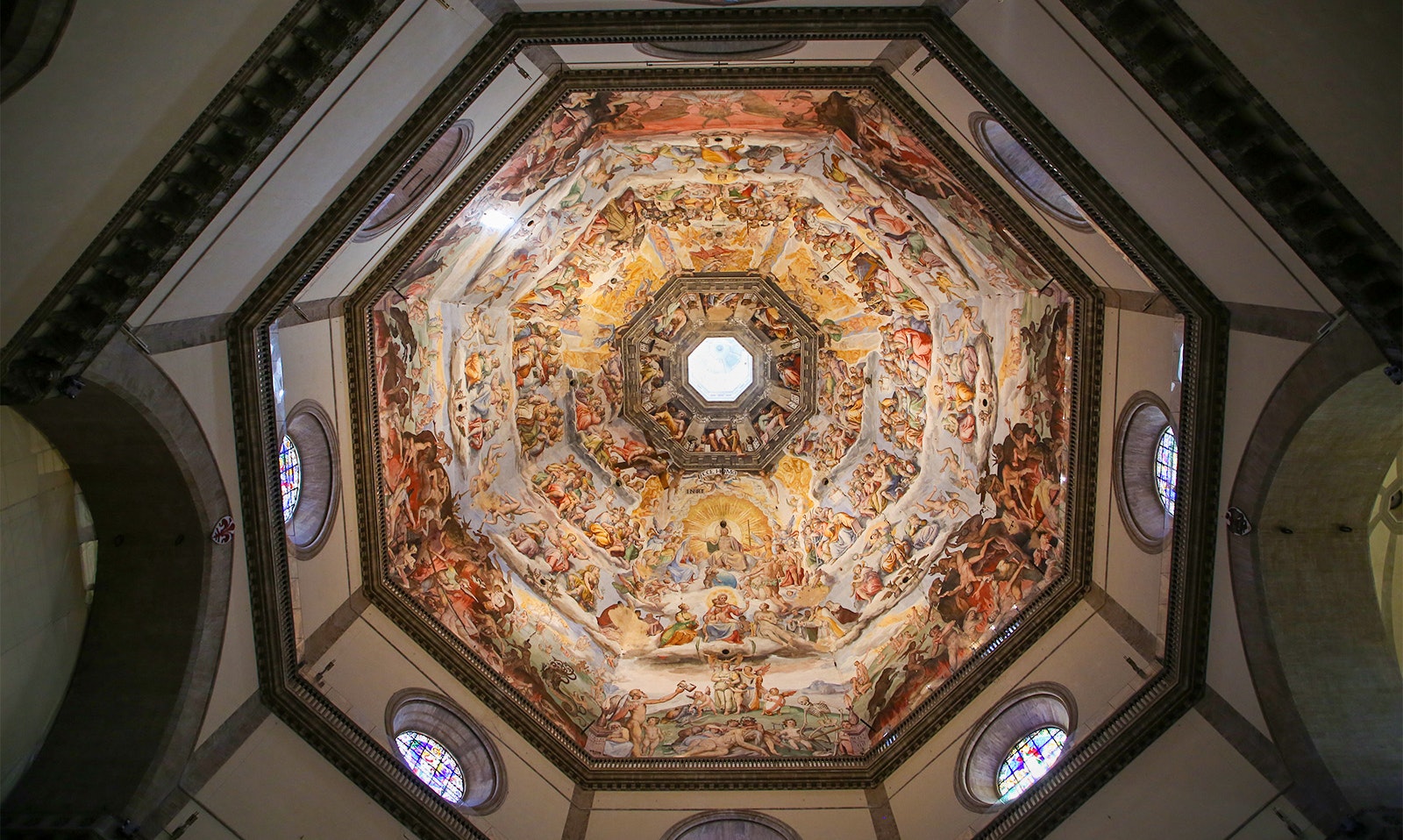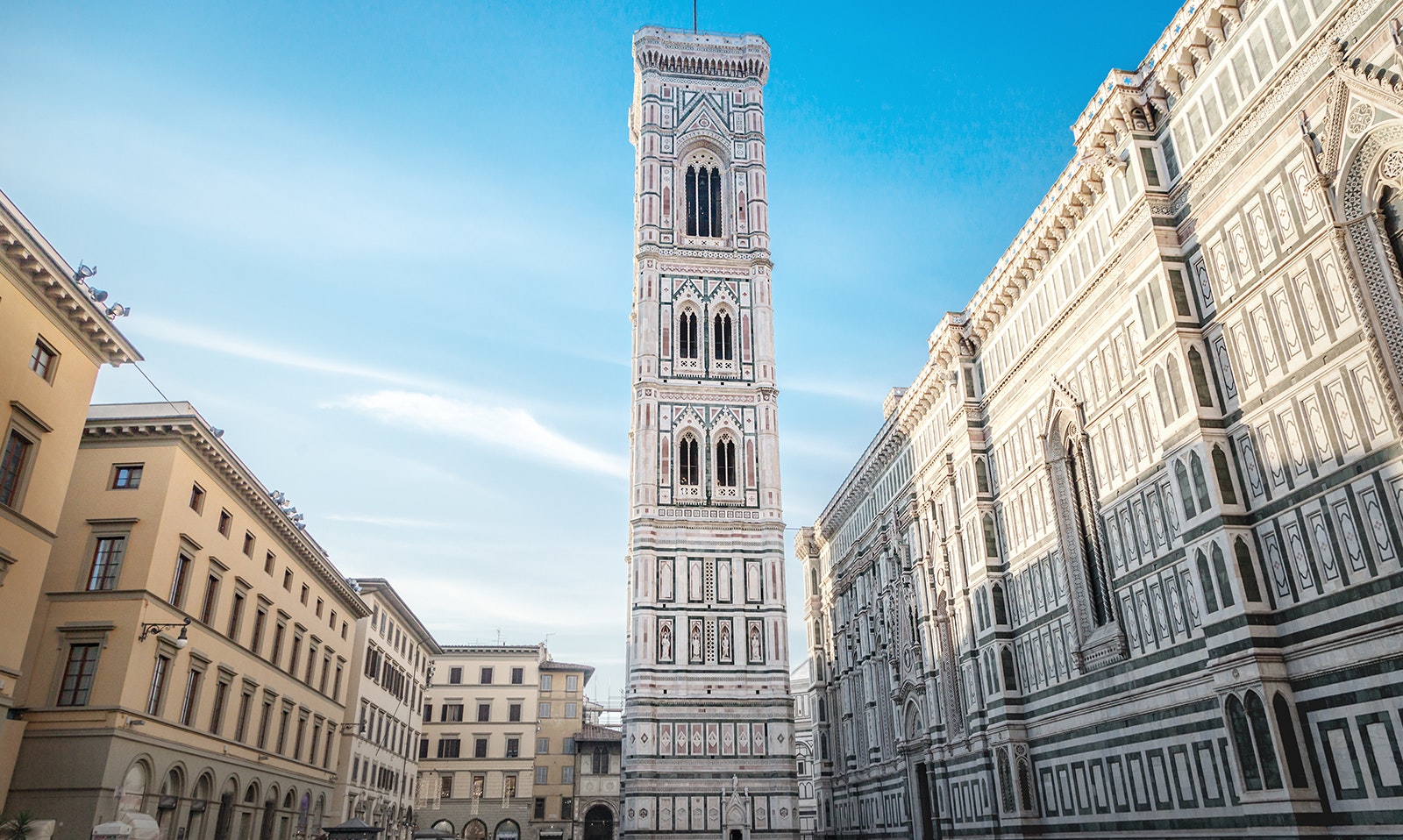Florence Cathedral, also known as the Duomo, is not just large and beautiful but also rich in history, making it one of Italy's most revered landmarks. It stands in Florence as the Eiffel Tower does in Paris, a must-see for visitors.
Inside Duomo Florence, you'll discover a ton of art and religious artifacts including stained-glass windows, detailed frescoes, and sculptures, along with a beautiful mosaic floor. The cathedral itself, the crypt below, and the Museo dell'Opera del Duomo, which displays many sculptures and items from the cathedral, are all open for exploration. Don't miss the Baptistery nearby, famous for its striking bronze doors.
Upon entering the cathedral, the sheer size and the plain decor will catch your eye. This simplicity makes the church's massive size even more evident. It was the largest in Europe when finished in the 15th century, measuring 153 meters in length, 90 meters across, and 90 meters high to the top of the dome.
Recommended tickets to Duomo Florence
Inside Duomo Florence: Top highlights

Crypt of Santa Reparata (Pictured above)
Situated beneath the Duomo, the Crypt of Santa Reparata is a window into the layered history of Florence, revealing artifacts from the early Christian, Roman, and Carolingian periods. The crypt, unveiled through archaeological excavations, showcases a stunning mosaic floor and hosts an array of funerary monuments and significant burials. This subterranean space provides a unique perspective on the city's development over centuries, offering visitors a tangible connection to its ancient past.
Brunelleschi's Dome
Constructed between 1420 and 1436 by Filippo Brunelleschi, the dome of Florence Cathedral is an architectural triumph, renowned as the world's largest brick dome. This groundbreaking structure was built without the aid of temporary supports, a revolutionary method at the time. Brunelleschi's design consists of an inner and outer shell, and its octagonal base spans 54.8 meters across externally, with an internal diameter of 45.5 meters. The dome not only dominates the Florence skyline but also symbolizes the ingenuity of the Renaissance, marking a significant advancement in architectural design.
Baptistry of San Giovanni
The Baptistry of San Giovanni, located in front of the cathedral, is a cornerstone of Florentine religious and civic life, consecrated in 1059. Initially mistaken for a pagan temple, this Romanesque building has roots tracing back to the 4th-5th century. The baptistry, known for its magnificent bronze doors and intricate mosaics, reflects the city's transformation over time and serves as a testament to Florence's rich medieval heritage.

Clock by Paolo Uccello (Pictured above)
Created in the 15th century, Paolo Uccello's clock is a marvel of artistic and mechanical engineering. This timepiece, located inside the cathedral, is not just functional but also an artistic gem that reflects the period's innovation and Uccello's mastery in geometry and perspective. Its design and operation add a historical and aesthetic depth to the cathedral's rich array of artworks.
Marble Choir of Bandinelli
Commissioned for the 700th anniversary of Florence Cathedral in 1547, Baccio Bandinelli's Marble Choir was a central element beneath Brunelleschi's dome. Although it was dismantled in 1842, the choir's design contributed significantly to the cathedral's liturgical and architectural harmony. Bandinelli's work created a sacred enclosure around the high altar, showcasing the artistic elegance and spiritual gravitas of the Renaissance period.
Stained Glass Windows
The Duomo's stained-glass windows, crafted by luminaries such as Donatello and Ghiberti, are masterpieces that illuminate biblical narratives with vibrant colors and intricate designs. These windows not only enhance the spiritual ambiance but also play with light to create a unique visual experience.

The Last Judgment by Giorgio Vasari (Pictured above)
The dome's interior is adorned with "The Last Judgment," a grand fresco begun by Giorgio Vasari in 1572 and completed by Federico Zuccari in 1579. Commissioned by Grand Duke Cosimo I de' Medici, this work encapsulates the theological and artistic aspirations of the time. The fresco, restored from 1989 to 1994, remains a monumental piece of Renaissance art, depicting the end of times with dramatic flair.
Bronze Doors by Luca della Robbia
Completed in 1469, the bronze doors crafted by Luca della Robbia for the cathedral's sacristy exhibit a shift towards a more focused and streamlined artistic expression. These doors, with their simplified forms and fewer figures, contrast with the more elaborate designs of the era, like Ghiberti's Baptistery doors, illustrating the evolution of artistic styles during the Renaissance.
Marble Flooring
The cathedral's floor, an expanse of white, black, and red marble inlaid with geometric patterns, was laid down between 1500 and 1660 by Tuscan artisans. Based on designs from Florentine masters, this flooring covers 8,200 square meters and complements the cathedral's grand architecture, adding to the overall aesthetic and historical narrative of the space.

Giotto's Bell Tower (Pictured above)
Giotto's Bell Tower, an example of Italian Gothic architecture, rises to a height of 84.7 meters beside the cathedral. With a climb of 414 steps, you can reach its summit to enjoy sweeping views of Florence. The tower's design is notable for its harmonious proportions, elaborate sculptural elements, and the use of color in its marble encasements. Its mullioned windows and friezes contribute to the tower's aesthetic appeal, making it a testament to the artistic and architectural innovation of the 14th century.
Mosaic by Gaddo Gaddi
Dating back to between 1296 and 1310, the mosaic attributed to Gaddo Gaddi in the cathedral depicts the Coronation of Mary, a significant work that combines regal and divine imagery. Surrounded by symbolic representations of the Gospels and angelic figures, this piece reflects the artistic and spiritual values of the medieval period.
The Secret Terraces
Access to the Duomo Florence Terraces is limited and requires a guided tour, available only at specific times. There is no elevator, and the ascent involves numerous stairs. It is advised that individuals with heart conditions or those prone to dizziness and claustrophobia avoid the climb.
The terraces of Florence's Cathedral, conceptualized by Brunelleschi in 1439, wasn’t just made as an enhancement to the cathedral. They also serve as vantage points that offer some of the best views of the city. At 32 meters high, they provide a unique opportunity to appreciate the cathedral's magnificence and the surrounding cityscape. These terraces, accessible through a specific route, allow you to experience Renaissance architecture up close, offering insights into the engineering techniques of the period.
Holy Water Stoup by Jacopo di Piero Guidi
Sculpted in 1380, this marble holy water stoup, crafted by Jacopo di Piero Guidi, is a remarkable piece of art influenced by the design of Giotto's Bell Tower. This stoup, which combines functionality with exquisite artistry, features intricate inlays and carvings that reflect the religious and architectural ethos of the time. Its design not only serves a place of worship, but also stands as a symbol of the rich cultural and historical context of Florence.


